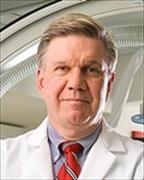Researchers Propose New Classification for Heart Disease Patients with Angina

William E. Boden, MD, professor of medicine, and scientific director of the VA New England’s Clinical Trials Network based at VA Boston, collaborated with 14 international heart disease experts to develop a new classification system unifying both obstructive coronary disease and non-obstructive causes.
Boden was joined by Raffaele De Caterina, MD, PhD, professor of cardiology at the University of Pisa School of Medicine and chief of the Cardiology Department in Pisa Italy, as co-first authors of the research review paper, “Myocardial Ischemic Syndromes: A New Nomenclature to Harmonize Evolving International Clinical Practice Guidelines.”
For decades, cardiologists and other practitioners widely regarded patients with chest pain or exertional discomfort of suspected cardiac origin to be the result of blocked or narrowed coronary arteries, but emerging research over the past several years has shown that many patients with chest discomfort do not have blocked or narrowed coronary arteries. This has led to confusion on how best to classify these patients. In addition, the recommendations of major U.S. and European professional societies, which promote guidelines for treating physicians, have differed widely over the past 15-20 years, which has often led to competing classifications.
“For years, most cardiologists have viewed chest pain as being caused by blockages and narrowings — much like we view rust or sludge in a pipe,” said Boden. “While such blockages can be effectively treated with a variety of heart medications and the use of coronary stents to prop open narrowed arteries, more than half of all patents do not have significant blockages and narrowed arteries.”
In the paper, Boden, De Caterina and their team highlighted the importance of having a classification system that is both accurate and comprehensive, to ensure all patients with chest discomfort are being properly evaluated and treated, based on the differing causes of angina. The researchers proposed a new binary classification of “acute myocardial ischemic syndromes” and “non-acute myocardial ischemic syndromes,” which comprises both obstructive epicardial and non-obstructive pathogenetic mechanisms, including microvascular dysfunction, vasospastic disorders, and non-coronary causes. They believe the new proposed classification will lead to more precise treatments targeted at the underlying causes of chest discomfort, ultimately benefiting more patients whose care can be better personalized. This has important implications for treating Veterans with heart disease, which is one of the major causes of death and disability within the VA Healthcare System.
“We now have better ways to both diagnose and treat patients with chest discomfort, which may be due spasm of the coronary arteries or abnormalities of the micro-vessels, which would not be improved with the use of coronary stents,” said De Caterina, who hopes that the international collaboration will lead to new clinical practice guidelines and better care outcomes for heart disease patients worldwide. “Only by working more closely together, and especially across the Atlantic, can we hope to lessen the burden of heart disease and achieve better survival with fewer heart attacks in the 21st Century.”